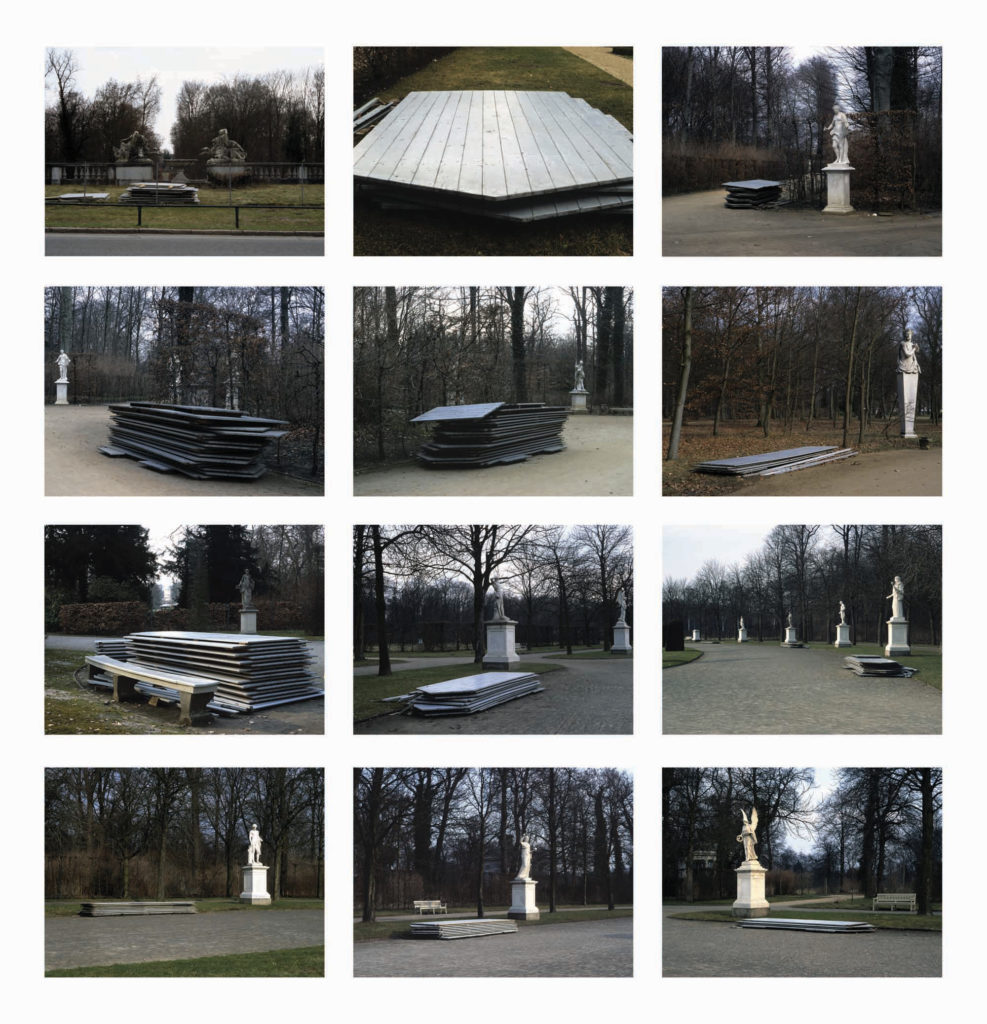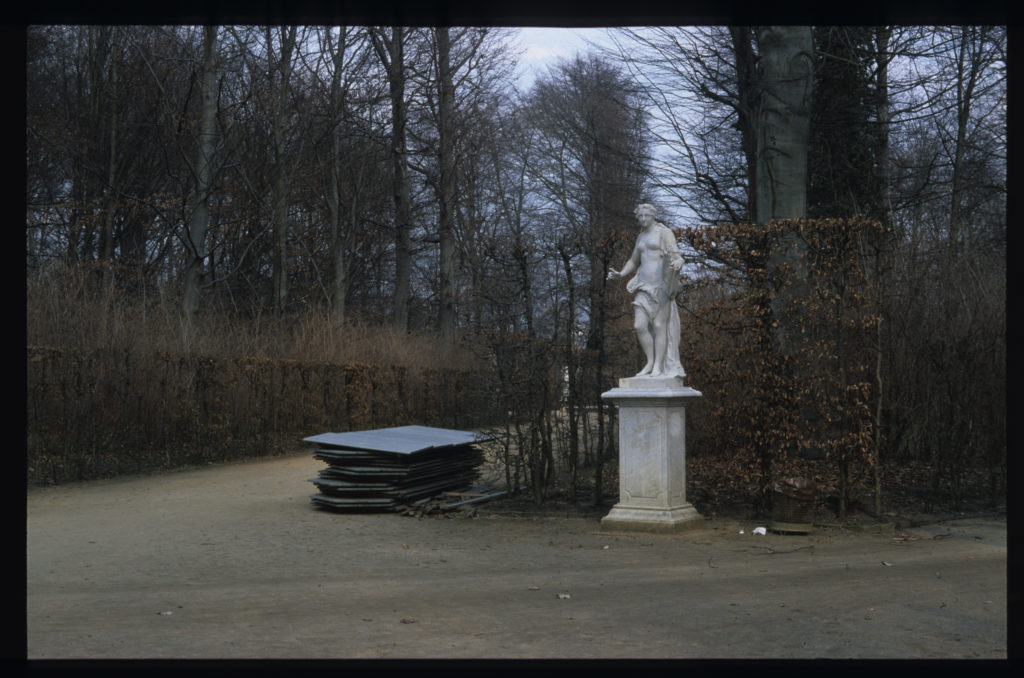Homes for German Sculpture is a group of photographs and sculptures done for and in response to the show “Ideal City—Invisible Cities” (Curated by Sabrina van der Ley and Markus Richter) which took place in Zamosc, Poland, and Potsdam, Germany in the summer of 2006. A principal concern of this show, evident in its title, was the tension between preservation (i.e. the maintnance of an illusive ‘ideal’) and visibility. The photographs (Park Map: Schlosspark Sanssouci) were taken during a walk through the Schlosspark Sanssouci in early spring. The neo-classical sculptures of the former summer palace of Frederick the Great had just been uncovered after a winter literally housed in their own structures; wooden gable roofed houses. The panels used for these houses were stacked in front of the sculptures on which they had been placed. Each image foregrounds these stacks as if they were themselves placed as some sort of sculptural intervention. The photographs are hung in a grid temporally and spatially replicating the walk from top to bottom and left to right. The sculptural components of Homes for German Sculpture reproduce two primary types of these winter “houses” in a scale familiar to portrait sculptures on pedestals, one tall and thin, the other made up of three low long modules. They take their names (Cape Cod and Ranch Three Times) from Dan Graham’s seminal “Homes for America” in which he writes of American housing developments:
Each house in a development is a lightly constructed “shell,” although this fact is often concealed by fake (half-stone) brick walls. Shells can be added or subtracted easily. The standard unit is a box or series of boxes,.. When the box has a sharply oblique roof it is called a “Cape Cod.” When it is longer than wide, it is a “ranch.”
Homes for German Sculpture:







